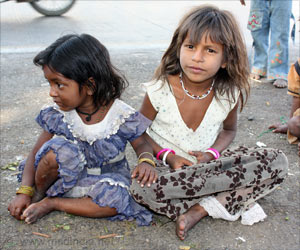Living in better neighborhoods can improve the health of children who live in poverty, according to study from UC San Francisco.

‘Less stress hormone was found in children with access to green spaces, clean air, quality grocery stores, reported a UC San Francisco study.’





"Cortisol is a measure of biological stress arousal, and elevated levels can place children at risk for both poorer physical and mental health," said first author Danielle Roubinov, PhD, assistant professor of psychiatry, and a member of the UCSF Weill Institute for Neurosciences.High cortisol levels are associated with elevated blood sugar, raised blood pressure, back pain, bone thinning, obesity, insomnia, anxiety and fatigue.
"'The quality of neighborhoods was assessed by a measure that evaluates access to green spaces, exposure to environmental toxins, and availability of early childhood education centers and grocery stores selling healthy food," said Roubinov. "Our study indicates that the quality of a neighborhood where a child grows up is one of several factors that can have a protective effect on their health."
Better Neighborhood Equals Better Health
The researchers also asked teachers and parents of the kindergartners, who were enrolled at six public schools in the San Francisco Bay Area, to report on the children's overall health and any impairments that may prevent them from participating in desired activities. They found that the 113 low-income children living in poor neighborhoods were in the 75th percentile when it came to such health issues, while the 32 low-income children in better-resourced neighborhoods scored in the 55th percentile.
The work follows a 2011 government study that found when low-income adults moved to wealthier neighborhoods as a result of a voucher housing initiative, the prevalence of obesity, diabetes and other self-reported health limitations declined.
Advertisement
Advertisement









